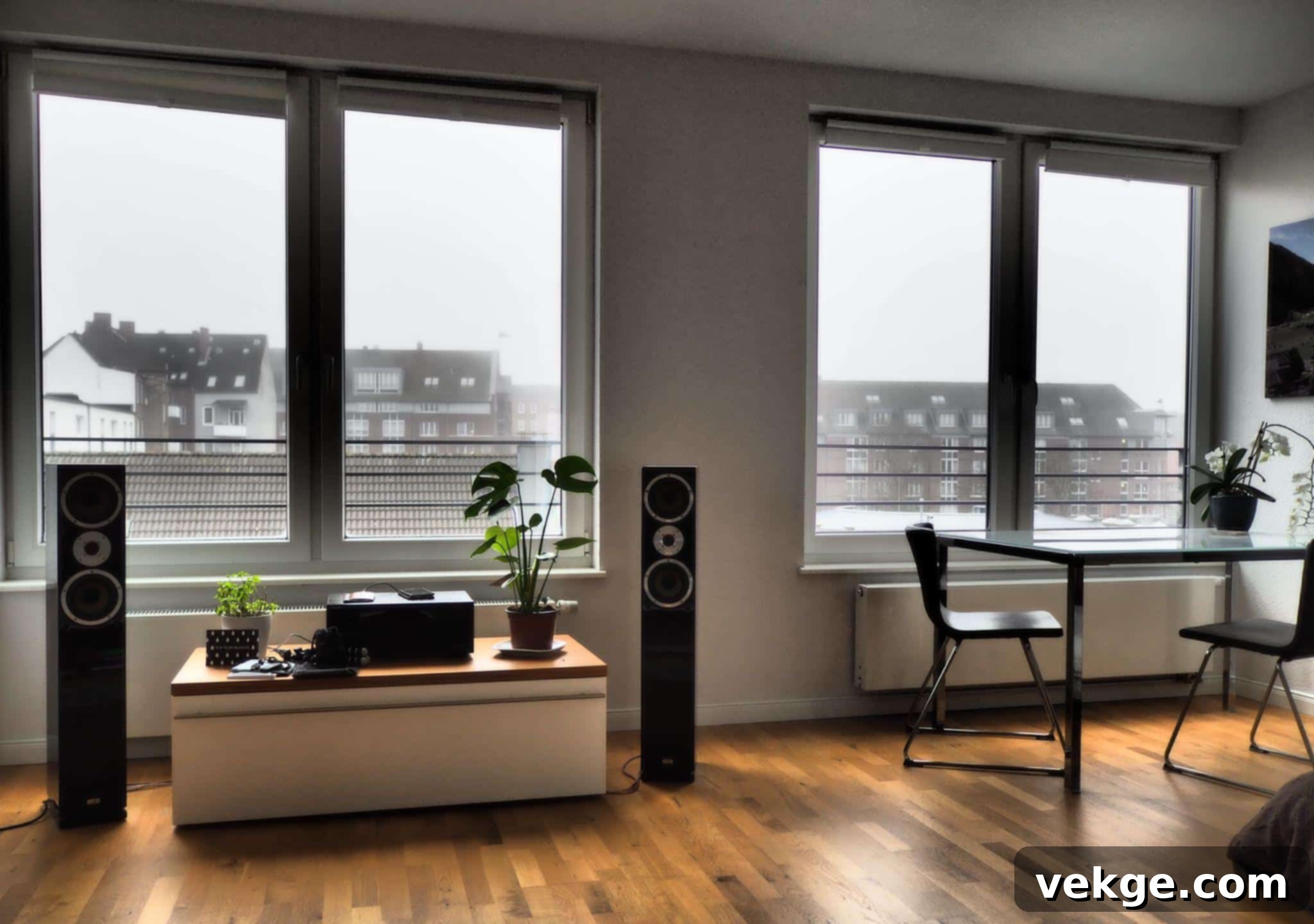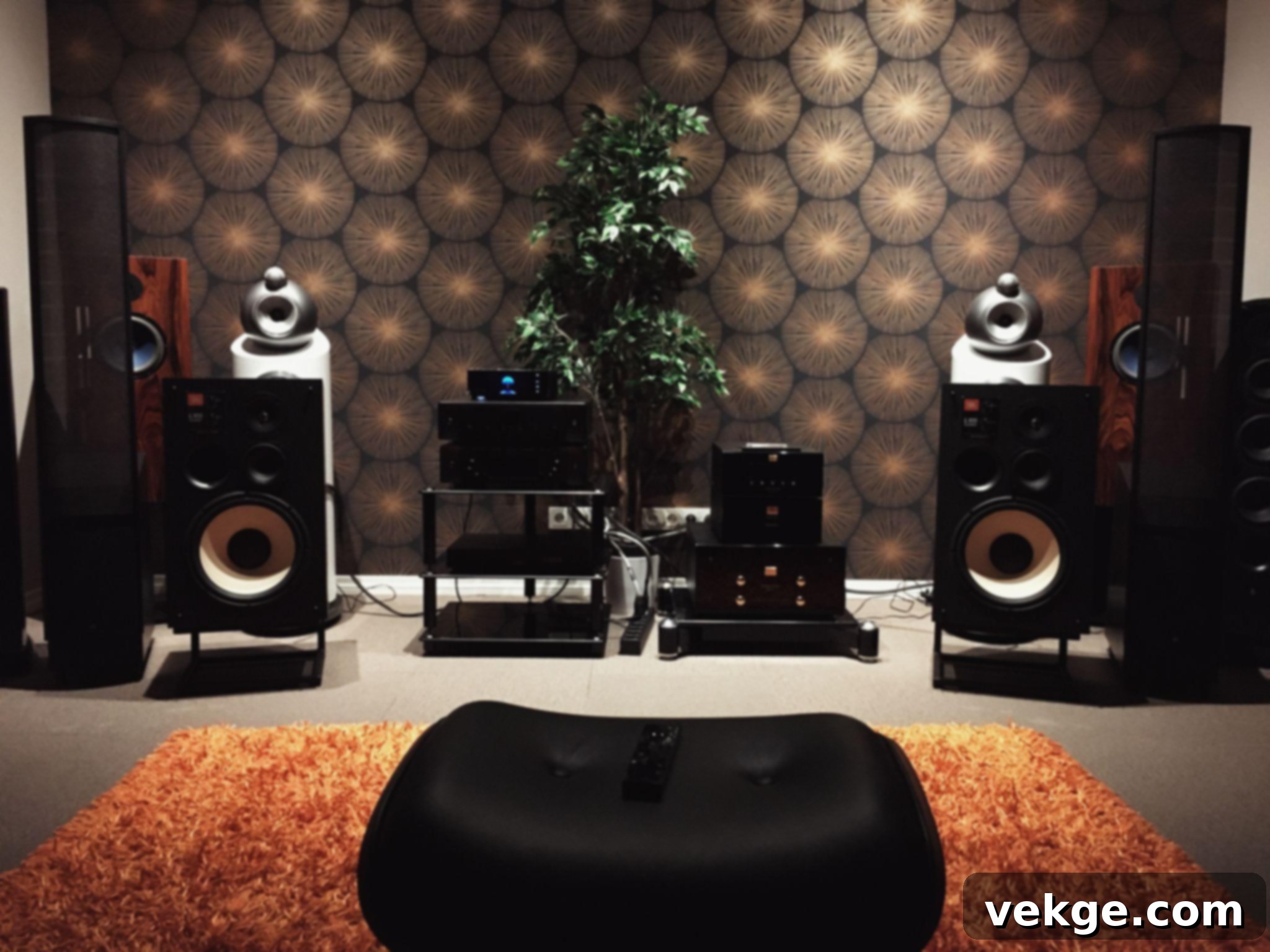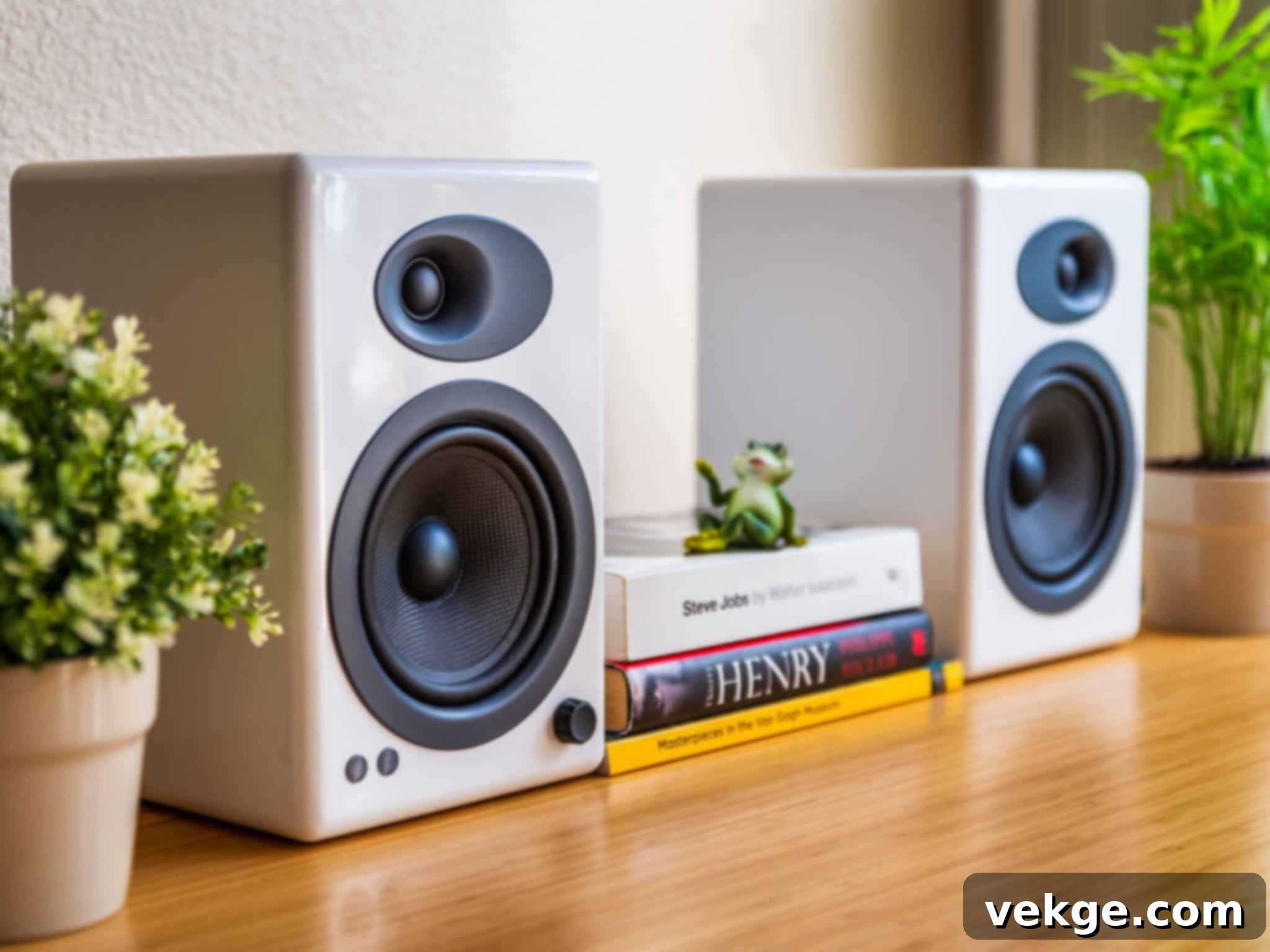Mastering Your Home Audio: A Comprehensive Guide to Building the Ultimate Sound System
Stepping beyond the basic television speakers can transform your home entertainment from a simple viewing experience into a truly immersive sonic journey. However, the initial foray into the world of dedicated home sound systems often feels daunting, filled with technical jargon and the fear of making a costly mistake. But fear not; crafting an exceptional audio setup doesn’t have to be an exclusive domain for experts.
With the right information and a clear understanding of your needs, you can confidently make well-informed decisions. Furthermore, reputable retailers, such as Smiths City, are often well-equipped to guide you through the selection process, ensuring you can create the ideal at-home cinema or concert hall experience any day of the week.
Essential Components for Your Home Sound System
At the heart of every great home sound system are two fundamental investments: a high-quality receiver (or amplifier) and a meticulously chosen set of speakers. These two components work in tandem to deliver the audio experience you desire.
The Brain of Your System: Stereo Amplifier or AV Receiver
More than just a hub for connections, a receiver is the central processing unit of your audio system. A good quality receiver ensures optimal sound delivery from your connected speakers, allowing you to fine-tune and optimize your entire setup.
Your choice of receiver largely depends on your primary listening habits and media preferences. For avid movie enthusiasts, a modern Audio/Video (AV) receiver designed for home theater systems is ideal. These units boast the capability to project crystal-clear 4K movie soundtracks, support advanced audio formats like Dolby Atmos and DTS:X, and host a wide array of HDMI devices, providing a seamless visual and auditory experience. Look for features like eARC (enhanced Audio Return Channel) for simplified connectivity with your TV.
In contrast, audiophiles focused primarily on music, particularly vinyl lovers, might lean towards a dedicated stereo amplifier. These are often simpler units designed for two-channel audio fidelity. If your turntable lacks a built-in preamplifier, you’ll either need a stereo amplifier with an integrated phono stage or a standalone preamp to boost the turntable’s signal.
Modern conveniences like built-in Bluetooth and Wi-Fi capabilities on receivers allow for effortless streaming from your smart devices and access to internet radio or other online music services. While highly convenient, these features aren’t always deal-breakers. Wireless streaming capabilities can often be added later, or through external devices, should your chosen receiver lack them initially.
A common alternative some consider is a streaming-focused soundbar. While soundbars offer a compact, all-in-one solution that can bypass the need for a separate receiver, this path often leads to limitations down the line. Connecting additional audio devices like turntables, dedicated gaming consoles, or expanding to a full surround sound system can become challenging, if not impossible, with most soundbars. For true flexibility and upgradeability, a receiver-based system is superior.
The Voice of Your System: Speakers
Speakers represent arguably the most impactful upgrade for any home theater or audio system. Unlike video standards that evolve rapidly, good-quality speakers are a long-term investment, often lasting 10 to 20 years or even more. This longevity makes them a truly worthwhile component to prioritize in your budget.
For minimalist setups or smaller rooms, powered speakers with integrated amplifiers can be a viable option, allowing direct connection to a turntable or other audio sources without a separate receiver. However, for most home theater and serious music listening setups, a receiver is essential to properly power passive speakers and manage multiple audio channels.
The vast market of speakers can be overwhelming, but focusing on key specifications will help narrow your choices:
- Frequency Response: This indicates the range of frequencies (measured in Hertz, Hz) a speaker can reproduce. A wide range, typically from around 20 Hz (deep bass) to 20,000 Hz (high treble), is highly desirable for a full, rich sound experience. Speakers with a narrower range might require a subwoofer to handle lower frequencies effectively.
- Sensitivity: Measured in decibels (dB) per watt at one meter, sensitivity reflects how efficient a speaker is at converting amplifier power into sound. Higher sensitivity numbers mean the speaker can produce more volume with less power from your receiver, allowing for a more dynamic sound and potentially enabling the use of lower-powered amplifiers.
- Impedance: Measured in ohms (Ω), impedance indicates the electrical resistance a speaker presents to the amplifier. Most home speakers are 4, 6, or 8 ohms. It’s crucial to match your speaker’s impedance to your receiver’s capabilities to prevent damage to either component.
- Power Handling: This spec tells you the minimum and maximum wattage an amplifier should deliver to the speakers without causing damage. It’s important not to confuse watts with loudness; instead, focus on achieving a system with higher efficiency and a suitable wattage, rather than simply chasing higher wattage numbers.
Beyond specifications, consider speaker types: bookshelf speakers are great for smaller spaces, floor-standing speakers offer a fuller sound with deeper bass, satellite speakers are compact and often paired with subwoofers in surround systems, and center channel speakers are crucial for clear dialogue in home theaters. Subwoofers provide dedicated low-frequency effects, adding impact to movies and depth to music.

Stereo System vs. Surround Sound: What’s Right for You?
For those truly serious about their audio, the ideal scenario often involves a dedicated stereo system for music and a separate surround sound system for TV and movie viewing. This dual setup offers the most immersive listening experience across both mediums, utilizing multiple speakers strategically placed throughout the room.
Stereo Sound (2.0 or 2.1)
A stereo system, typically consisting of two front speakers (left and right) and sometimes a subwoofer (2.1), is optimized for music. It focuses on accurate soundstage imaging, allowing instruments and vocals to appear distinctly placed within a three-dimensional sonic landscape. This configuration is often preferred by audiophiles for its purity and focus on musical fidelity.
Surround Sound (5.1, 7.1, Dolby Atmos)
Surround sound systems, on the other hand, are engineered for cinematic immersion. A common 5.1 setup includes a center channel speaker for dialogue, two front speakers, two surround speakers (positioned to the sides or slightly behind the listener), and a subwoofer. More advanced systems like 7.1 add two rear surround speakers, while Dolby Atmos and DTS:X setups incorporate overhead or up-firing speakers (e.g., 5.1.2 or 7.1.4) to create a truly three-dimensional “bubble” of sound, allowing effects to move above and around you.
If budget or space constraints prevent a separate dual system, modern home theater receivers are remarkably versatile. Almost all current AV receivers feature a two-channel stereo listening mode, enabling you to utilize just the front two speakers for enjoying your favorite music, while still having the full surround capabilities for movies and gaming. This hybrid approach offers excellent value and flexibility for most users.
Optimizing Your Sound: Choosing the Perfect Speaker Placement
To truly unlock the potential of your sound system, considerable time and attention should be dedicated to speaker placement. Even the most expensive speakers will underperform if not positioned correctly. This may even involve rearranging furniture to achieve the best acoustic environment.
Here are some key considerations for optimal speaker placement:
- Front Left/Right Speakers: Many audio experts recommend not placing speakers flush against the wall, as this can lead to boomy or unclear bass. Instead, try pulling them out slightly from the wall. Angle, or “toe-in,” the speakers towards your main listening position (the “sweet spot”) rather than pointing them straight forward. This creates a more focused and detailed soundstage. Aim for an equilateral triangle between the two front speakers and your listening position.
- Center Channel Speaker: This speaker is vital for dialogue clarity in movies and TV shows. It should be placed directly above or below your television, as close to the screen as possible, and aimed towards the listening area.
- Surround Speakers: In a 5.1 setup, surround speakers are typically placed slightly to the sides and a little behind the main listening position, ideally at or slightly above ear level when seated. For 7.1 systems, additional rear surrounds are placed directly behind.
- Subwoofer: Subwoofer placement can be tricky due to the nature of low frequencies. Bass waves are omnidirectional, meaning they spread out in all directions, and can interact unpredictably with room boundaries. A common technique is the “subwoofer crawl”: place the subwoofer in your main listening position, then crawl around the room to find where the bass sounds best. That’s where you should place your subwoofer. Avoid corners unless specifically advised by room correction software, as corners can exaggerate bass unevenly.
- Elevation: If possible, elevate your front and surround speakers so their tweeters (the small drivers for high frequencies) are roughly at ear level when you are seated. This helps create a more natural and well-rounded sound with better projection. Stands or wall mounts are excellent for this purpose.
- Room Acoustics: Consider the room itself. Hard surfaces (bare walls, tile floors) can cause reflections and echo, while soft furnishings (carpets, curtains, upholstered furniture) can absorb sound. A balanced room with some strategically placed absorption or diffusion can significantly improve sound quality.
The distance and placement of your speakers will also dictate the type and length of speaker wire you’ll need. A good rule of thumb is: the further away your speakers are located, the thicker (lower gauge AWG) the wire needs to be to minimize signal loss and maintain audio fidelity. Ensure you use high-quality, oxygen-free copper (OFC) wire to avoid signal degradation. For a sleeker, wire-free appearance and reduced clutter, selecting wireless speaker options or using wireless kits for existing speakers can be a convenient alternative, though some critical listeners may prefer wired connections for ultimate stability and quality.

Extra Tips to Consider Before Your Purchase
Before making your final decision, take these additional considerations into account to ensure your new sound system perfectly aligns with your expectations and lifestyle.
- Are You a Critical or Casual Listener?
Understanding your listening habits is paramount. A critical listener prioritizes sonic accuracy, detail, and immersive soundstaging, often willing to invest more in high-fidelity components and meticulous setup. For them, a full surround system, or a premium stereo setup, might be essential. In contrast, a casual listener values convenience, ease of use, and a noticeable upgrade over basic TV audio, without necessarily needing audiophile-level precision. This distinction will significantly influence your budget and the complexity of the system you build. Always try to test out a demo version of the system or components you’re considering. If it doesn’t sound good to you at the dealer, it’s highly unlikely to magically improve in your home.
- Consider the Size and Acoustics of Your Room.
The physical space where your system will reside plays a crucial role. A compact soundbar or small bookshelf speakers might work wonderfully in a snug apartment living room, providing ample sound without overwhelming the space. However, a larger, open-plan living area will likely demand more powerful speakers, possibly floor-standing models, and a more extensive speaker configuration (e.g., a 7.1 or Dolby Atmos setup) to effectively fill the area with rich, satisfying sound. Factors like ceiling height, presence of carpet versus hardwood, and the amount of soft furnishings will also affect how sound behaves in your room.
- Determine the Primary Use of Your System.
What will your sound system be used for most often? If your primary goal is an enhanced TV viewing experience, with the occasional ability to listen to music, a high-quality soundbar with a dedicated subwoofer, or a basic home theater receiver paired with a 3.1 or 5.1 speaker system, would be an excellent choice. The subwoofer is particularly crucial for impactful movie soundtracks and deep bass in music. If your priority is immersive gaming, low-latency audio and precise positional sound from a surround setup will be beneficial. If music is king, then a focus on high-quality stereo speakers and a dedicated amplifier might be more important than the number of channels.
Conclusion: Embark on Your Sonic Journey
Building the perfect home sound system is a journey of discovery and personal preference. By understanding the core components – receivers and speakers – and considering crucial factors like stereo vs. surround sound, optimal placement, and your unique listening habits, you can confidently navigate the options available. Remember that the goal is not merely to acquire equipment, but to create an audio environment that brings your movies, music, and games to life.
Don’t hesitate to seek advice from trusted retailers and audio specialists. Their expertise can be invaluable in helping you piece together a system that perfectly matches your aspirations and budget. With a little research and careful consideration, you’ll soon be enjoying an unparalleled audio experience from the comfort of your own home.
